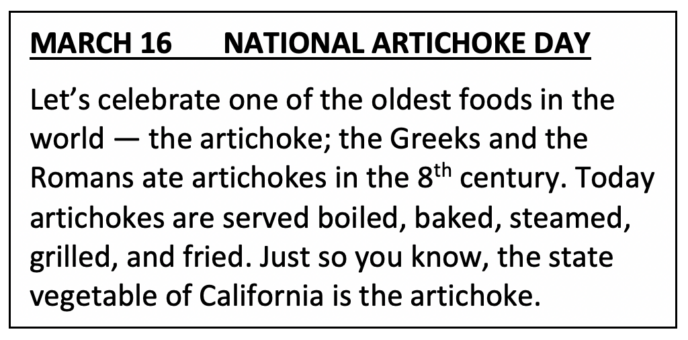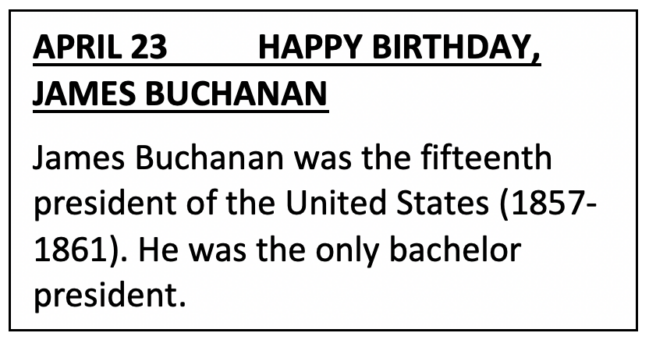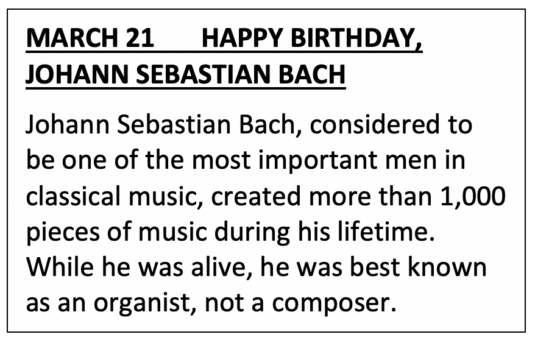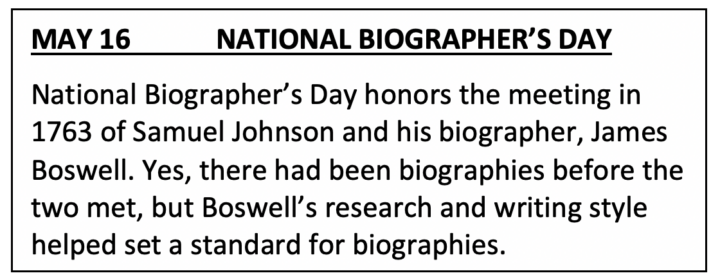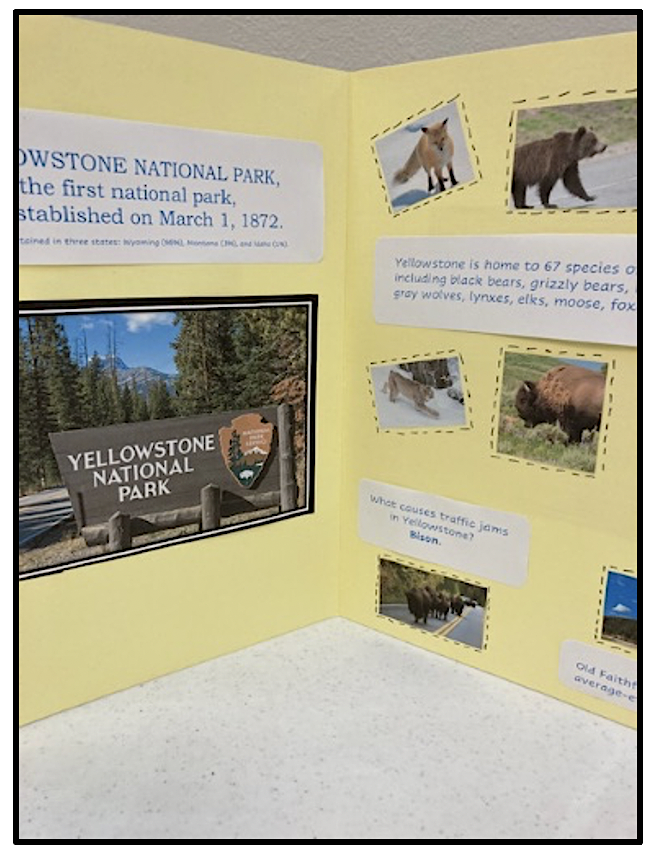Calendar Activities Add Spice to Spring Classes
By Anne Anderson
 Preparing students to learn is no easy task for a teacher – experienced or novice. As the school year moves ahead into its final months, it becomes even more challenging.
Preparing students to learn is no easy task for a teacher – experienced or novice. As the school year moves ahead into its final months, it becomes even more challenging.
Our teacher toolboxes are filled with pedagogy, strategies and activities, and most of us have a few extra tricks-of-the-trade. But some days we just need more!
I’ve found a Calendar of Days to be an excellent resource. When I incorporated the weird and unusual into my everyday instruction, my students responded positively. And no surprise – kids in the middle grades love things that are off-the-wall or bizarre.
Here’s how it works
Let’s explore how to use the calendar to activate students’ brains and boost learning.
Evoke student curiosity with one of my favorite activities, “Throw-n-Go.” That’s when I toss out a piece of trivia, almost as an aside, and then continue with the lesson.
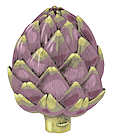
Granted, there is probably not a question about artichokes on the state test. However, this 90-second interruption in the rhythm of the lesson works in my favor. By changing the pitch and rhythm of my voice, I recapture their attention.
“Throw-n-Go” also works with content information. Someone famous was born today. You can be sure of it. On days when not much else is happening (that’s sufficiently strange), grab a celebrity (or oddball) birthday and throw in two facts:
Let me share how versatile “Throw-n-Go” can be.
As students enter the classroom, have some of Bach’s music playing. You most likely will see eyes rolling or hear some complaints about the classical music. At the beginning of class make this simple announcement: “Today is Johann Sebastian Bach’s birthday. When you entered, you heard a portion of one of the more than 1,000 pieces of classical music he created during his lifetime.”
Proceed with your regularly planned lesson until that point when you execute the “Throw-n-Go.” And on this day you have two options.
Option #1 (surprise): You do know, right, that Bach’s music is frequently featured in commercials from Allstate, American Express, BMW, and Papa Murphy’s Pizza?
Option #2 (joke): Hey . . . did you hear about the dog who played the piano? Turns out his Bach was worse than his bite!
Superfluous? Not when it works!
These activities may seem superfluous; however, when used in moderation, they support students in learning more successfully. Educators have long known that laughter is good for the brain – it causes an endorphin surge and gets more oxygen to the learning engine in our heads. And various studies report the value of classical music in reducing stress and improving focus.
That said, calendar-related activities can be more traditional. Check out these ideas for celebrating National Biographer’s Day. The suggested projects provide an opportunity to address multiple standards in a more familiar way.
Why not assign students to create a biography of someone born in March, April, or May? Click here to access a list of birthdays featured in my book Calendar Celebrations; March, April, May.
Or, consider these three presentation suggestions: File Folder Facts, a PowerPoint presentation, or a full-blown multimedia presentation complete with sounds and animations. Any worthy celebration day will do – a birthday, a memorable event day in history, a fruit, vegetable, product, animal (Feb. 26 is National Polar Bear Day),
Review the basic requirements of each option below and then customize an activity to meet the instructional needs of your students.
This individual assignment requires a minimum amount of in-class time. The culminating activity can be a gallery walk and a brief oral presentation. General requirements: a letter-size file folder; minimum of five facts; maximum of five pictures. (That’s my sample, above, celebrating the opening of Yellowstone National Park on March 1, 1872.)
PowerPoint
This group project (3 – 4 students) requires more in-class work time. The culminating activity is a slide show along with a 3 – 5 minute oral presentation. If it’s a birthday:
• General requirements: 5 – 7 slides
• First slide: birthday person’s name, date of birth, date of death (if applicable)
• Middle slides: information about person’s life, accomplishments, notable awards, honors
• Last slide: resources and group members
Multimedia Presentation
This group project (3 – 4 students) could require extensive in-class time as your students include sounds, images, and music in their presentations. The culminating activity is a 3 – 5 minute presentation which communicates information efficiently. To learn more about digital storytelling, visit meridianstories.org or check out Brett Pierce’s article “Preparing Our Students to Be Digital Storytellers” at middleweb.com.
The calendar is beneficial when addressing “soft” skills related to social and emotional development and employment. For example, March is National Optimism Month while April is National Humor Month. Plan ways to celebrate National Let’s Laugh Day (March 19), National Common Courtesy Day (March 21), Moment of Laughter Day (April 14), or National Smile Day (May 31).
Looking Ahead
Should your school year extend beyond May, you should know that the first Friday in June is National Doughnut Day and National Rocky Road Ice Cream Day is June 2. Since the first Friday in June is the second, you can celebrate with a doughnut on the way to school and a scoop of Rocky Road on the way home.
I hope you’ll check out my books for more ideas. And here’s useful online resource: National Calendar Day.
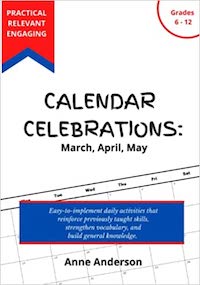
Calendar Celebrations: March, April, May is part of Anne Anderson’s trilogy on quick, engaging activities and resources for months of the school year. (For MiddleWeb she wrote about selected winter celebrations here, about fall here, and about other spring resources here.) Anne has also published articles in IDEAS Plus and Voices from the Middle, publications of the National Council of Teachers of English. She is a frequent reviewer of professional books for MiddleWeb.com.

